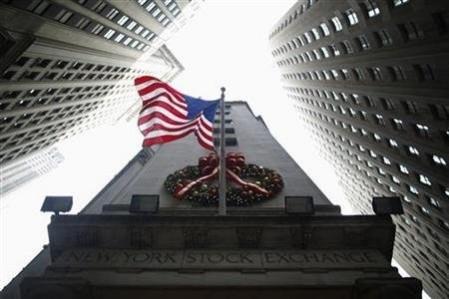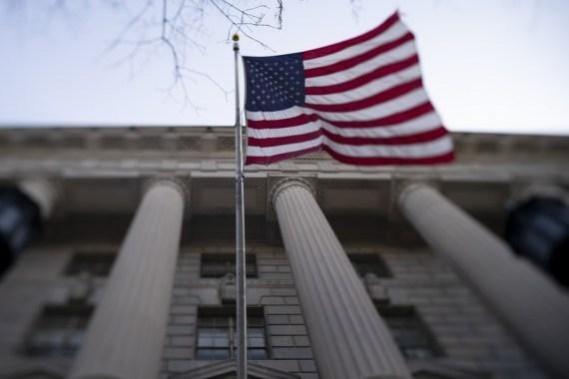
The United States economy, long a paragon of resilience, now navigates a tempest of contradictory currents. On September 25, the Bureau of Economic Analysis unveiled a robust upward revision to second-quarter gross domestic product growth at 3.8 percent annualized, up from an initial 3.3 percent estimate and a stark rebound from the first quarter's 0.6 percent contraction. This surge, propelled by consumer spending and a dip in imports, masks deeper fissures: a ballooning July trade deficit of 78.3 billion dollars, a labor market eviscerated by 911,000 fewer jobs than previously tallied over the prior year, and the Federal Reserve's inaugural rate cut of 2025 signaling mounting downside risks. Layered atop these are the Trump administration's sweeping tax overhauls via the One Big Beautiful Bill Act, signed July 4, which extends 2017 Tax Cuts and Jobs Act provisions indefinitely while exempting tips and overtime from taxation, measures poised to inflate the federal deficit by trillions. As tariffs escalate, 100 percent on branded drugs and 25 percent on heavy-duty trucks, these developments herald a precarious pivot. This analysis extrapolates from verified indicators, dissecting the interplay of trade imbalances, employment fragility, monetary recalibrations, and fiscal profligacy to forecast trajectories, proffer assessments, and delineate imperatives for policymakers.
Trade Tempest: Deficit Ballooning as Tariffs Bite
The July trade deficit's 32.5 percent surge to 78.3 billion dollars from June's revised 59.1 billion dollars underscores the perils of protectionism. Imports leaped 7.1 percent to 349.3 billion dollars, fueled by pre-tariff stockpiling of capital goods and consumer durables, while exports stagnated at 271.0 billion dollars, a mere 0.5 percent uptick. The goods deficit alone widened 21.2 percent to 103.9 billion dollars, with China, Mexico, and Vietnam as primary culprits. Extrapolating from BEA data, this trajectory, compounded by new duties effective next week, could shave 0.5 to 1.0 percentage points off third-quarter GDP, as retaliatory measures from trading partners erode export competitiveness. Yet, the Q2 GDP rebound to 3.8 percent offers a counterpoint: a 10.9 percent import plunge masked underlying vigor, with consumer spending up 4.2 percent and business investment edging 0.7 percent higher despite policy fog. Deloitte's baseline forecast tempers this to 2.6 percent annual growth in 2025, citing tariff-induced supply chain snarls and a merchandise deficit ballooning to 4.5 percent of GDP. Inflationary undertones loom: core PCE at 2.8 percent year-over-year through March, but August CPI at 2.9 percent signals tariff pass-throughs could reignite pressures.
Labor Labyrinth: Revisions Reveal a Softening Core
The labor market's fragility crystallized in August's meager 22,000 payroll addition, the feeblest since December 2020, and a 4.3 percent unemployment rate, the highest since October 2021. Bureau of Labor Statistics revisions obliterated 911,000 jobs from March 2024 to March 2025 tallies, with July alone shedding 258,000 and June marking the first monthly loss since late 2020. Native-born unemployment climbed amid immigration curbs, slowing labor force growth to 0.3 percent quarterly, half the pre-2025 pace, while sectors like manufacturing and retail hemorrhaged amid tariff hikes and federal layoffs. Extrapolating, EY projects 100 basis points of Fed easing through 2026 as job gains decelerate to 100,000 monthly, risking a wage-price spiral if tariffs inflate costs without productivity gains. Personal income rose 0.4 percent in July to 112.3 billion dollars, buoying disposable income, but consumption expenditures climbed 0.5 percent, hinting at precautionary saving amid uncertainty. The Conference Board forecasts 1.6 percent year-over-year growth in 2025, with tariffs trimming another 0.3 points in the second half.

Monetary Maneuvers: Fed's Cautious Carve
The Federal Open Market Committee's September 17 quarter-point trim, to 4.00-4.25 percent, marks a paradigm shift, with Chair Jerome Powell emphasizing labor downside over inflation's 2.5 percent PCE creep. An 11-1 vote signals consensus on two more cuts by year-end, as futures markets price 75 percent odds of another 25 basis points in December. Governor Christopher Waller advocates preemptive easing if August jobs disappoint further, balancing 3.1 percent core inflation against recessionary shadows. This dovish pivot, amid White House entreaties, risks moral hazard but averts a 2008 redux: Atlanta Fed's GDPNow eyes 2.0 percent Q3 growth, contingent on sustained consumption. IMF projections align at 1.7 percent for advanced economies in 2025, with the US outpacing peers but vulnerable to policy shocks.
Fiscal Follies: Tax Overhaul's Double-Edged Sword
The One Big Beautiful Bill Act, renamed the Working Families Tax Cut for populist sheen, permanently extends TCJA individual provisions, slashes corporate rates to 21 percent, and exempts tips, overtime, and Social Security benefits from taxation through 2028. Retroactive to January 2025, it boosts standard deductions (15,750 dollars single/31,500 dollars joint) and child tax credits, costing 2.2 trillion dollars over FY2025-2034, offset by IRA clean energy repeals and tariff revenues. Tax Foundation models 2.9 percent GDP uplift in an upside scenario via deregulation, but baseline warns of 1.5 percentage point deficit hikes, pushing debt-to-GDP toward 130 percent by 2030. Winners, high earners and tipped workers, gain 1,500 to 3,000 dollars annually, but low-income households (under 30,000 dollars) face post-2029 hikes. Extrapolating, this could stoke inequality, with Gini coefficient rising 0.02 points, while funding cuts (212 million dollars to DEA) erode public safety.
Prospective Pathways: Scenarios from the Data Deluge
Three trajectories emerge from IMF, Deloitte, and Conference Board models. Baseline (60 percent probability): 2.1-2.6 percent 2025 growth, with Fed cuts stabilizing labor at 4.2 percent unemployment; tariffs cap investment at 1.1 percent, deficit at 6.5 percent of GDP. Downside (30 percent): Recessionary stall (1.3 percent growth) if revisions cascade, unemployment hits 5 percent, and retaliation shrinks exports 5 percent; echoes 2001 dot-com bust. Upside (10 percent): 2.9-3.2 percent surge via tax-fueled consumption and deregulation, unemployment at 3.8 percent, but inflationary tariffs cap at 3.5 percent core PCE.
Verdicts and Vanguards: Navigating the Nexus
Assessments are unequivocal: the economy's 3.8 percent Q2 vigor belies structural strains, trade deficits at multi-decade highs, labor revisions eroding confidence, and fiscal largesse risking bond vigilantes. Tariffs, while shielding sectors like trucking, imperil 700,000 jobs; tax cuts, though stimulative short-term, exacerbate inequality and debt, with 39.5 billion dollars slashed from development aid. Fed's pivot earns plaudits for prescience but invites scrutiny if inflation rebounds. Imperatives abound: Congress must recalibrate tariffs via targeted exemptions, preserving 4.6 billion dollar surpluses with allies like South America. BLS revisions demand transparent benchmarking to restore data integrity. Fiscal hawks should cap TCJA extensions at 1.4 trillion dollars, redirecting to infrastructure for 1.5 percent productivity lift. The Fed ought to telegraph 50 basis points if Q3 jobs falter below 150,000, while Treasury bolsters IRS withholding to front-load refunds, mitigating 2026 sticker shock.
In this crucible, the US economy teeters between triumph and tribulation. Policymakers, heed the indicators: calibrate boldly, or court confluence of crises. The republic's fiscal fortitude demands no less.
[Major General Dr Dilawar Singh is an Indian Army veteran who has led the Indian Army's Financial Management, training and research divisions introducing numerous initiatives therein. He is the Senior Vice President of the Global Economist Forum AO ECOSOC, United Nations and The Co President of the Global Development Bank.]


![Too drunk to walk? Karnataka to drop heavily intoxicated revellers home, sets up rest centres for New Year crowds [Watch] Too drunk to walk? Karnataka to drop heavily intoxicated revellers home, sets up rest centres for New Year crowds [Watch]](https://data1.ibtimes.co.in/en/full/826552/too-drunk-walk-karnataka-drop-heavily-intoxicated-revellers-home-sets-rest-centres-new-year.png?w=220&h=135&l=50&t=40)


![Too drunk to walk? Karnataka to drop heavily intoxicated revellers home, sets up rest centres for New Year crowds [Watch]](https://data1.ibtimes.co.in/en/full/826552/too-drunk-walk-karnataka-drop-heavily-intoxicated-revellers-home-sets-rest-centres-new-year.png?w=220&h=135)


